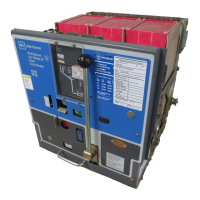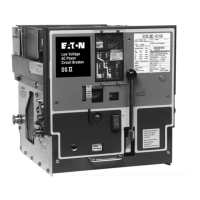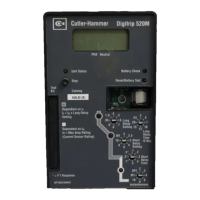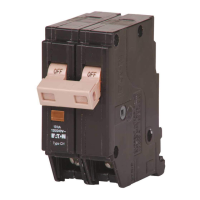1.8. 33-790-11
because the crank handle is still being used to move
the breaker
in
the final part
of
its travel to the DIS-
CONNECT position. Thus, the trip plate is still
pushed
in
and consequently the breaker is trip free.
2.
Figure 30a,
b,
c and d shows the essential parts
of
the spring discharge interlock. a and b show the
levering device in the REMOVE position. The Inter-
lock Plate has two horizontal pins 7 and 8 extending
from
it,
as shown in
a,
b,
c and
d.
The upper one is
designated arbitrarily as Pin A and is darkened to
distinguish it from Pin
B.
In
levering the breaker out
to the REMOVE position as shown
in
a and b the
levering shaft has turned counterclockwise until the
levering device arms are horizontal to the rear. As it
a) Connect Position
Page 33
rotates, the close bar cam has been rotated counter-
clockwise by Pin
B.
to the CLOSE position. This
releases the spring release latch through the linkage
shown
in
Figure
30,
which results
in
a trip-free opera-
tion
of
the breaker if the closing springs are charged.
This happens because the levering device crank has
the Trip plate held
in
the Trip Position.
If
the breaker
is manually operated, levering out can be stopped at
the TEST position. Remove the levering device crank
handle and (1) Close the breaker and (2) Trip the
breaker. This will discharge the springs so that, when
the REMOVE position is reached, there will not be a
trip-free operation. The Close bar will merely be
pulled into the "CLOSE" position.
c)
Disconnect Position
t • I I
1. Levering Device Arms
b) Test Position
'-::::/
2. Shutter
3. Shutter Interlock Pin
4.
Interlock Cam
d} Remove Pofition
Fig. 29 Relation
of
Shutter, Interlock Cam and Levering Device Arms
Effective October 1998
Courtesy of NationalSwitchgear.com

